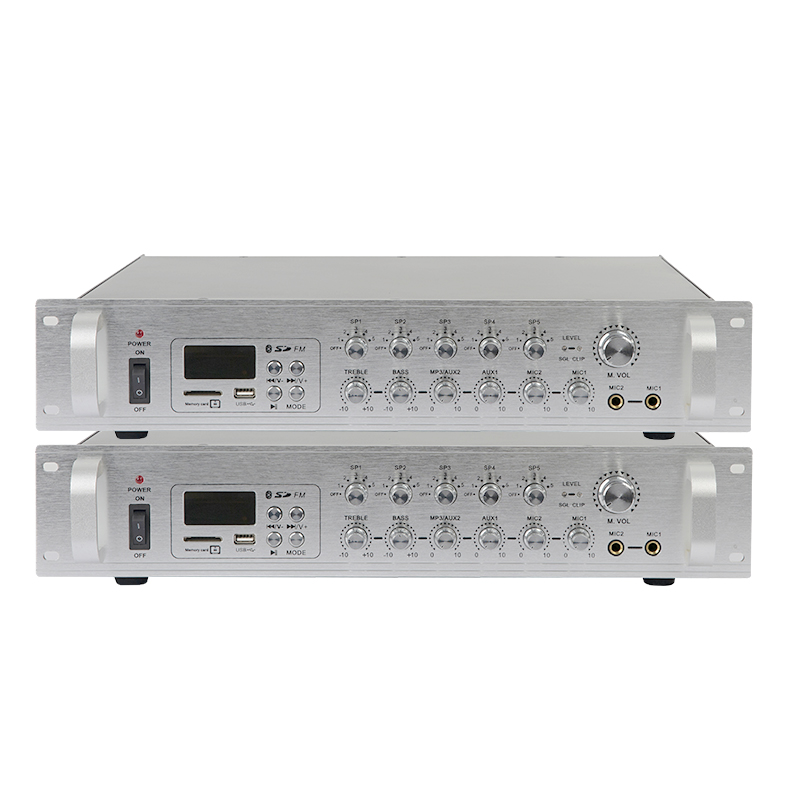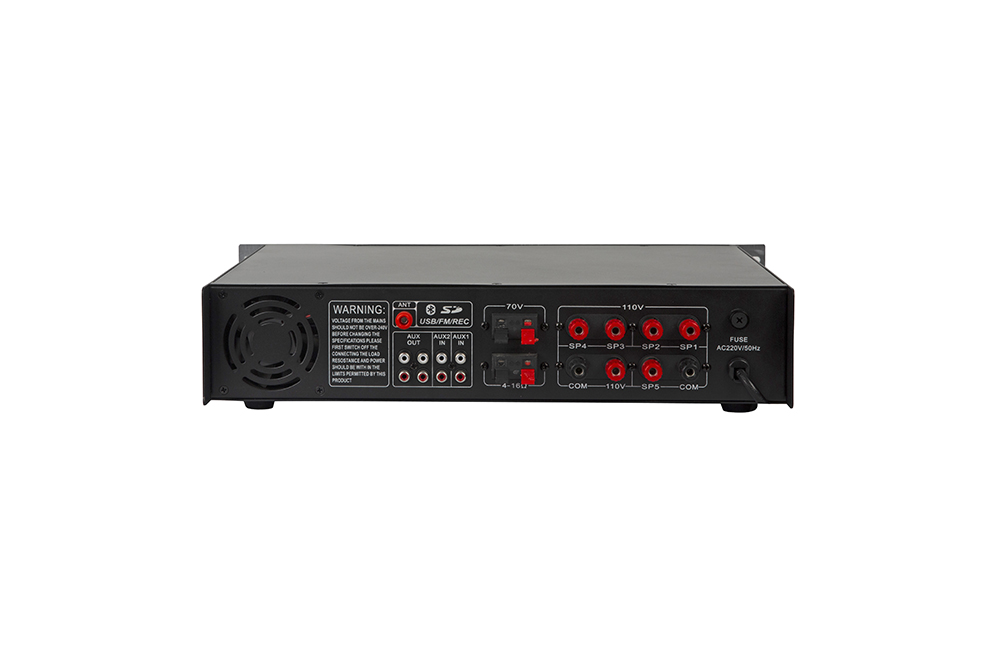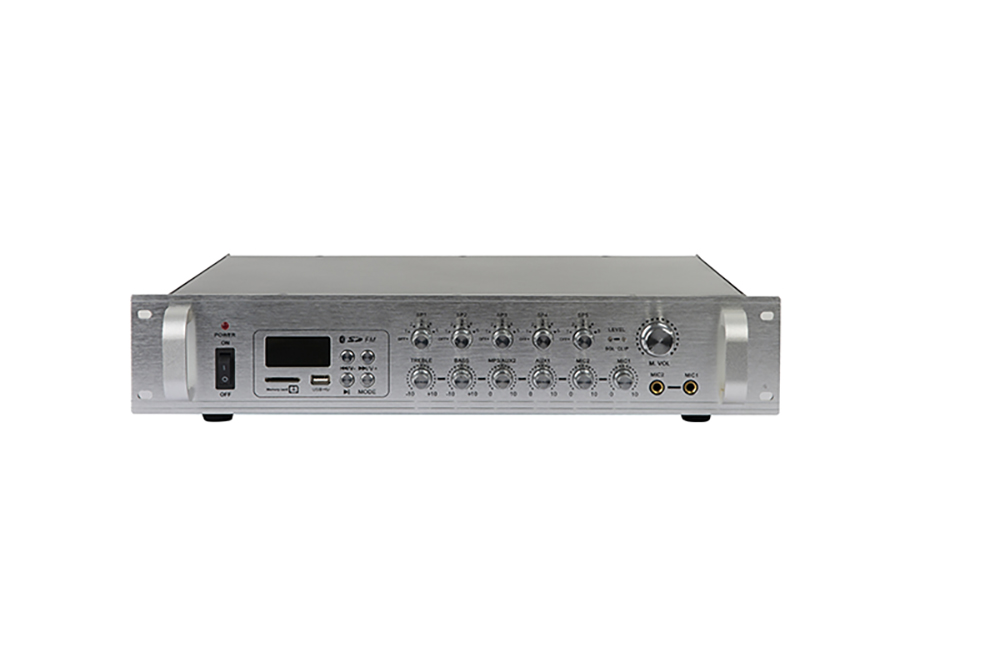
搜索
When setting up a school PA system, choosing the right 100V line amplifier is crucial for clear announcements, background music, and emergency broadcasts. In this guide, we’ll review the best 100V amplifiers for schools in 2025, including top brands like CaiDS, and answer key questions like:
How to connect a 70V amplifier to speakers?
How to choose a PA amplifier?
What’s the difference between 100V line and standard amplifiers?
Why choose an outdoor waterproof PA amplifier?
✅ Power: 1000W (Supports large campuses)
✅ Features: Digital signal processing (DSP), IP65 waterproof rating (ideal for outdoor use), and fire alarm integration.
✅ Why Choose It? CaiDS is a trusted brand in public address systems, offering high reliability and energy efficiency.
✅ Power: 600W (Medium-sized schools)
✅ Features: Modular design, easy zone control.
3. TOA A-2400MK2
✅ Power: 2400W (Large auditoriums)
✅ Features: Advanced overload protection, remote monitoring.
✅ Power: 1000W
✅ Features: Budget-friendly, strong bass response.
✅ Power: 500W (Small classrooms)
✅ Features: Lightweight, simple setup.
Pro Tip: For schools needing outdoor waterproof PA amplifiers, the CaiDS PA-1000X (IP65) is a top pick.

Many schools use 70V or 100V line systems because they allow long cable runs without power loss. Here’s how to connect them:
Check Speaker Impedance – Ensure all speakers are 70V/100V compatible.
Use Correct Wiring – Parallel connection (not series) with 18AWG+ speaker wire.
Set Transformer Taps – Adjust speaker transformers to match amplifier power (e.g., 10W, 20W per speaker).
Test Before Final Install – Verify no short circuits or impedance mismatches.
⚠️ Warning: Never connect 4Ω/8Ω speakers directly to a 100V amp—use a matching transformer!

✔ Power (Wattage) – Calculate total speaker load + 30% headroom.
✔ 100V vs. 4Ω/8Ω System – 100V is better for long-distance wiring (schools, factories).
✔ Durability – Outdoor waterproof PA amplifiers (IP65+) are best for playgrounds.
✔ Fire Alarm Integration – Required for emergency broadcasts.
✔ Remote Control – Useful for multi-zone school setups.
Example: A school with 20x 10W speakers needs at least 300W (20x10W + 50% safety margin).

| Feature | PA Amplifier (100V Line) | Standard Amplifier (4Ω/8Ω) |
|---|---|---|
| Best For | Schools, Factories, Large Areas | Home Audio, Concerts |
| Wiring Distance | Long (500m+) | Short (<50m) |
| Power Efficiency | High (Low Current Loss) | Lower (Higher Heat) |
| Speaker Matching | Requires 70V/100V Transformers | Direct 4Ω/8Ω Connection |
Why Schools Prefer 100V Line Systems?
Fewer cables (single wire runs to multiple speakers).
No power loss over long distances.
Easy expansion (just add more speakers).

If your school has outdoor speakers (playgrounds, sports fields), a weatherproof amplifier (IP65+) is essential.
CaiDS PA-1000X (IP65) – Best for extreme weather.
TOA A-2400MK2 (IP54) – Good for covered areas.
Installation Tips:
Use UV-resistant cables.
Install in a ventilated, dry cabinet.
Test humidity resistance before final setup.
For most schools, the CaiDS PA-1000X is the best balance of power, durability, and features. If you need fire alarm integration, Bosch PLENA is a great alternative.
🔹 For Small Schools: BOSCHN AMP-500W
🔹 For Large Campuses: TOA A-2400MK2
🔹 For Outdoor Use: CaiDS PA-1000X (IP65)
Need Help Choosing? Comment below with your school’s size and requirements!
销售:陈桂群:15158869321
技术:朱大庆:13732200872
邮箱:vicky@kaishengsound.com
地址:杭州市余杭区瓶窑镇凤都工业区前程路10号